In our mission to bring high quality environmental education to all students in Sonoma Valley, Sonoma Ecology Center hosted a UC California Naturalist for Teachers (UC CalNat) course last Fall to support our Valley’s educators in their environmental education programs. We are thrilled to have received funding from the California State Parks Foundation through their Wildfire Resiliency and Prevention Grant to offer this course at an accessible price point. Teachers are now sharing ways that they have been able to use the learnings from our course to improve their environmental instruction.
Megan Gorman, a 5th grade teacher at Gravenstein Elementary School, shares “[the course] gave me a lot of insight into how [land] is managed, how resilient our ecosystem is to fire, and how scary climate change is,” illustrating how UC CalNat for Teachers enhanced her understanding and teaching of environmental science.
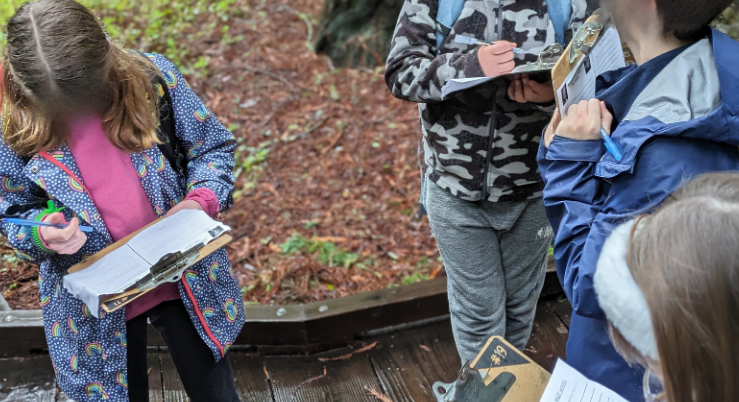
Megan’s 5th grade students at Gravenstein Elementary School completing assignments from a booklet that includes the “I notice, I wonder, and It reminds me of,” a concept Megan learned from UC CalNat for Teachers. Photo courtesy of Megan Gorman.
After taking the class, Megan incorporated the concepts she learned in UC CalNat for Teachers into the classroom. The picture above shows her students completing assignments from a booklet that includes the “I notice, I wonder, and It reminds me of” concept that she learned from CalNat for Teachers. This practice provides a way to facilitate observation and inquiry, thereby establishing a strong foundation to learn environmental science. By incorporating “I notice, I wonder, and It reminds me of” into the curriculum, Megan was able to increase students’ curiosity and engagement with the natural world. “Other parts of the booklet include using the questions and concepts found in the park itself,” Megan says.

Megan’s 5th graders going on a field trip to Muir Woods, where she taught lessons on trees, fire, and climate change, using knowledge she gained from UC CalNat for Teachers. Photo courtesy of Megan Gorman.
Sergio Blanco, a 7th and 8th grade teacher at Hillcrest Middle School says that the course has given him “a huge change in perspective regarding land management with respect to wildfire resilience and climate change. I learned a lot about wildfires. I have been disseminating information about them, trying to convey the idea that not all forest fires are necessarily destructive or bad for the environment,” Sergio shares.
“Reflecting on the good and bad of wildfire was informative. The forestry session (the last Zoom) was particularly useful in understanding the dynamics of forest management and how human understanding of forest ecology plays into management schemes,” says Tracy Salcedo, a library media specialist at Altimira Middle School. “I’ve already incorporated elements and resources into my work with the Lassen Association on wildfire recovery in Lassen Volcanic post-Dixie Fire. What I’ve learned will continue to inform my advocacy locally. The concepts discussed — good fire versus bad fire; how fire affects habitats and plant communities over time; how efforts to clear accumulations of fuels affect ecosystems and habitats over time; how human perceptions vary and change when it comes to fire safety and resiliency — are fascinating … and the science continues to evolve. Deepening my understanding of fire ecology enhances my ability to communicate effectively about the subject in all my work. It also helps me continue to heal as a fire survivor,” Tracy continues.

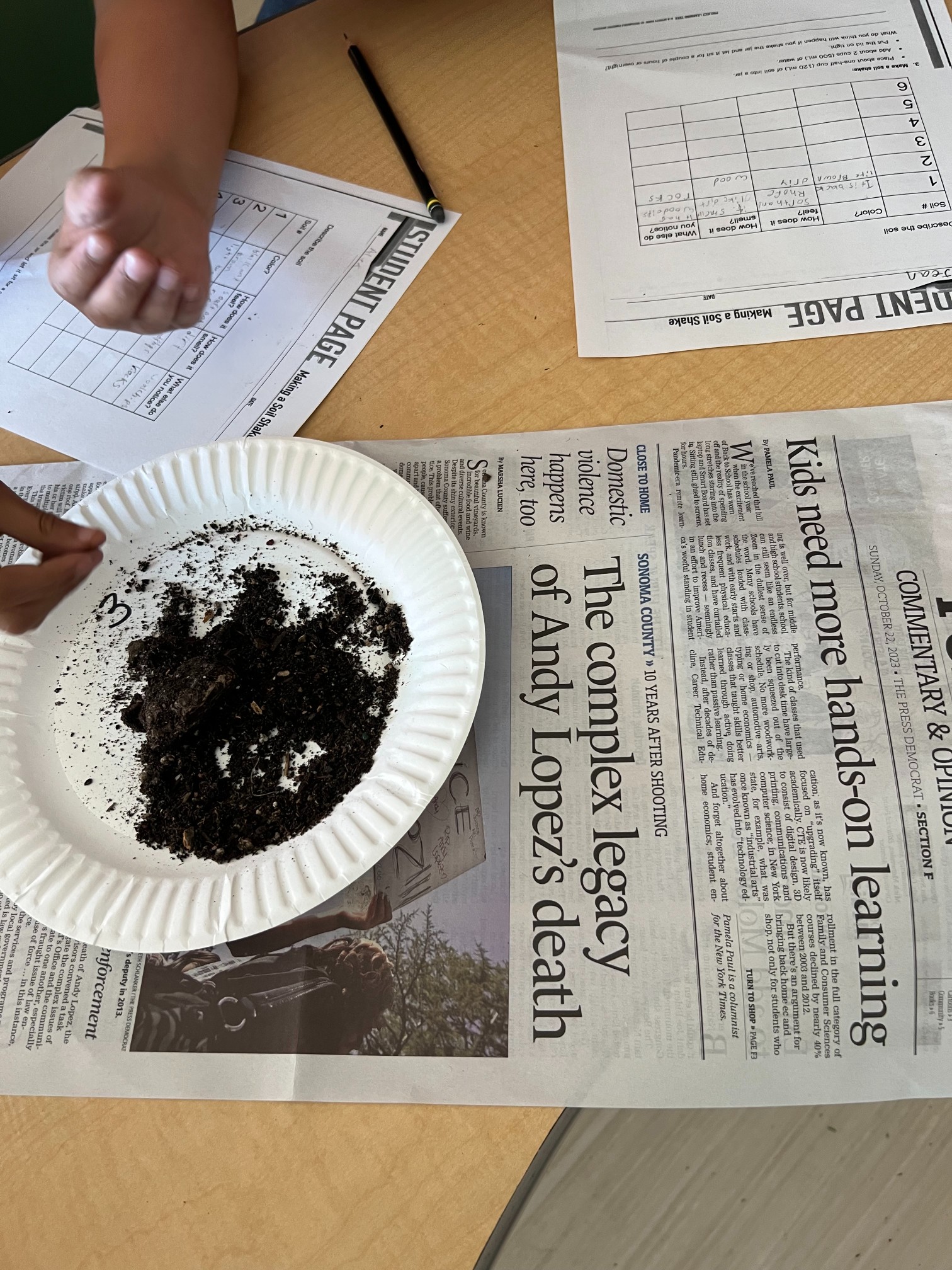
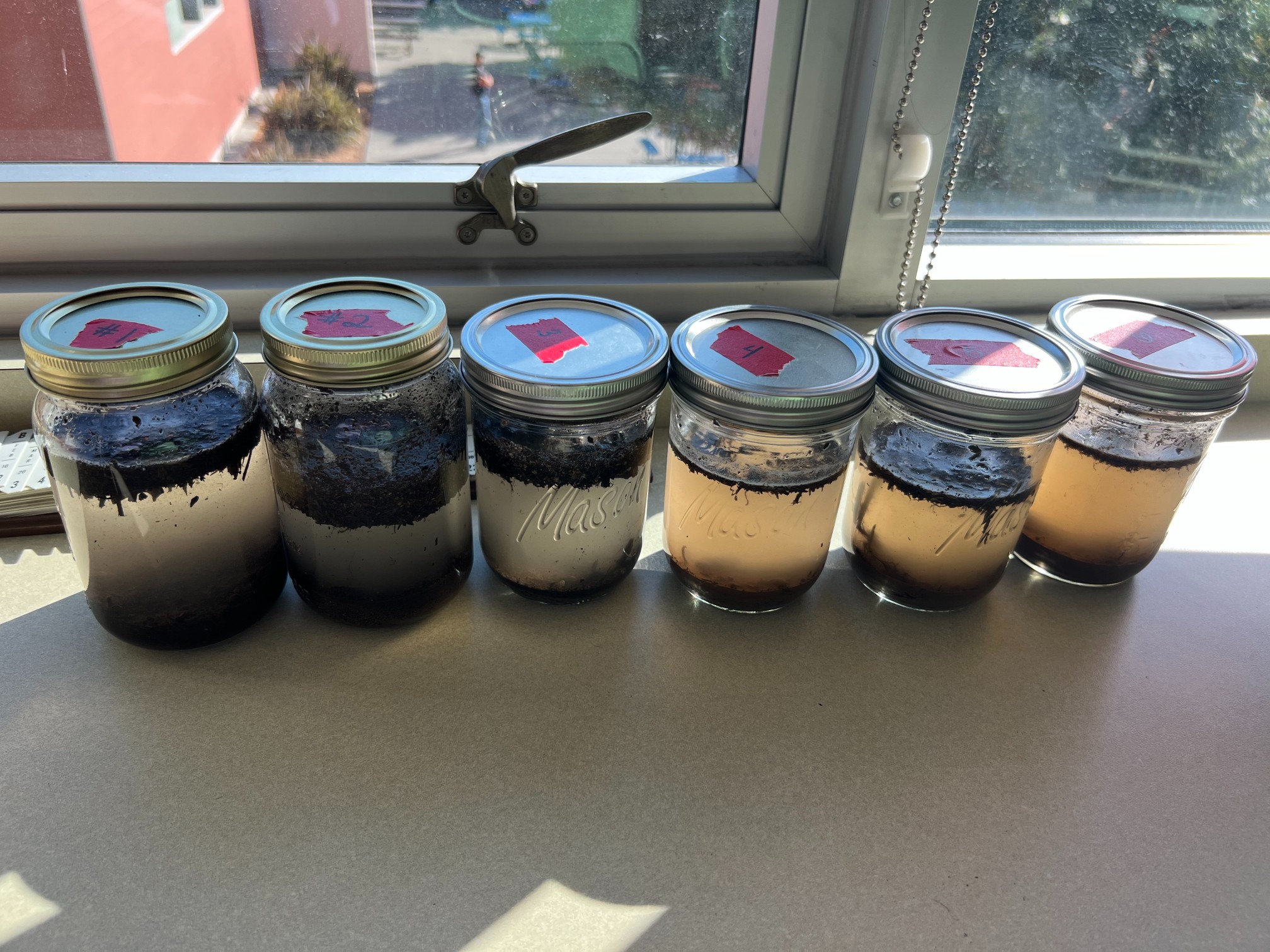
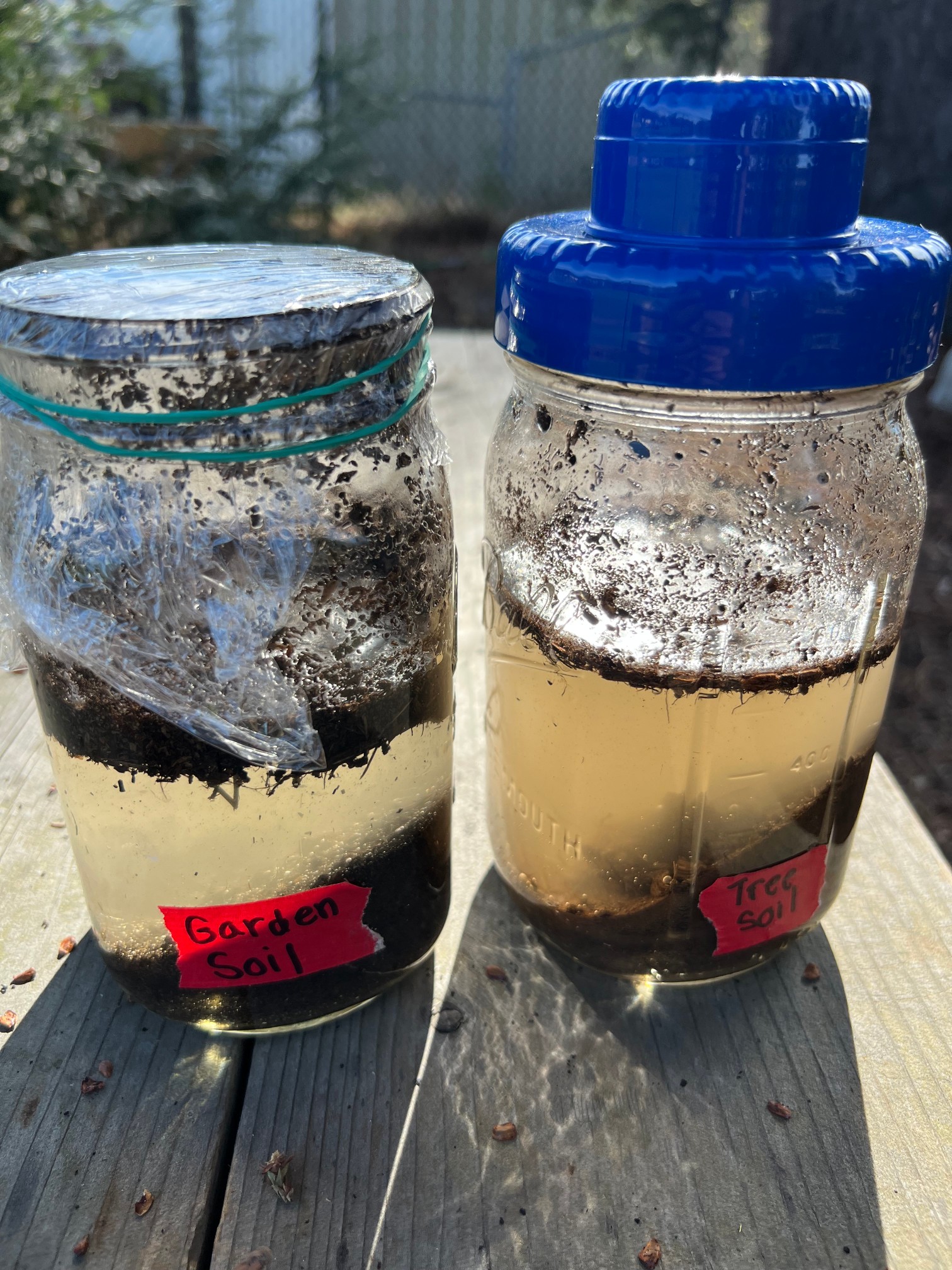
Soil lessons coming from Project Learning Tree, a component of UC CalNat for Teachers that Sonia Phelps Nuss, a substitute teacher at JX Wilson Elementary School brought into her classroom. Photos courtesy of Sonia Phelps Nuss.
“The CalNat course increased my awareness of nature in our community. I experienced the learning potential by looking closely at the environment and asking questions such as ‘I notice, I wonder, and it reminds me of’ which are great prompts for myself and students. At this time, I’m using lessons from Learning Tree to bring into the classroom. When I [substitute], I am helping teachers with part of sub preparation. Prepping for science can be time consuming! Additionally I’ve used the materials for an enrichment time called Fun Friday,” Sonia Phelps Nuss, a substitute teacher at JX Wilson Elementary School shares.
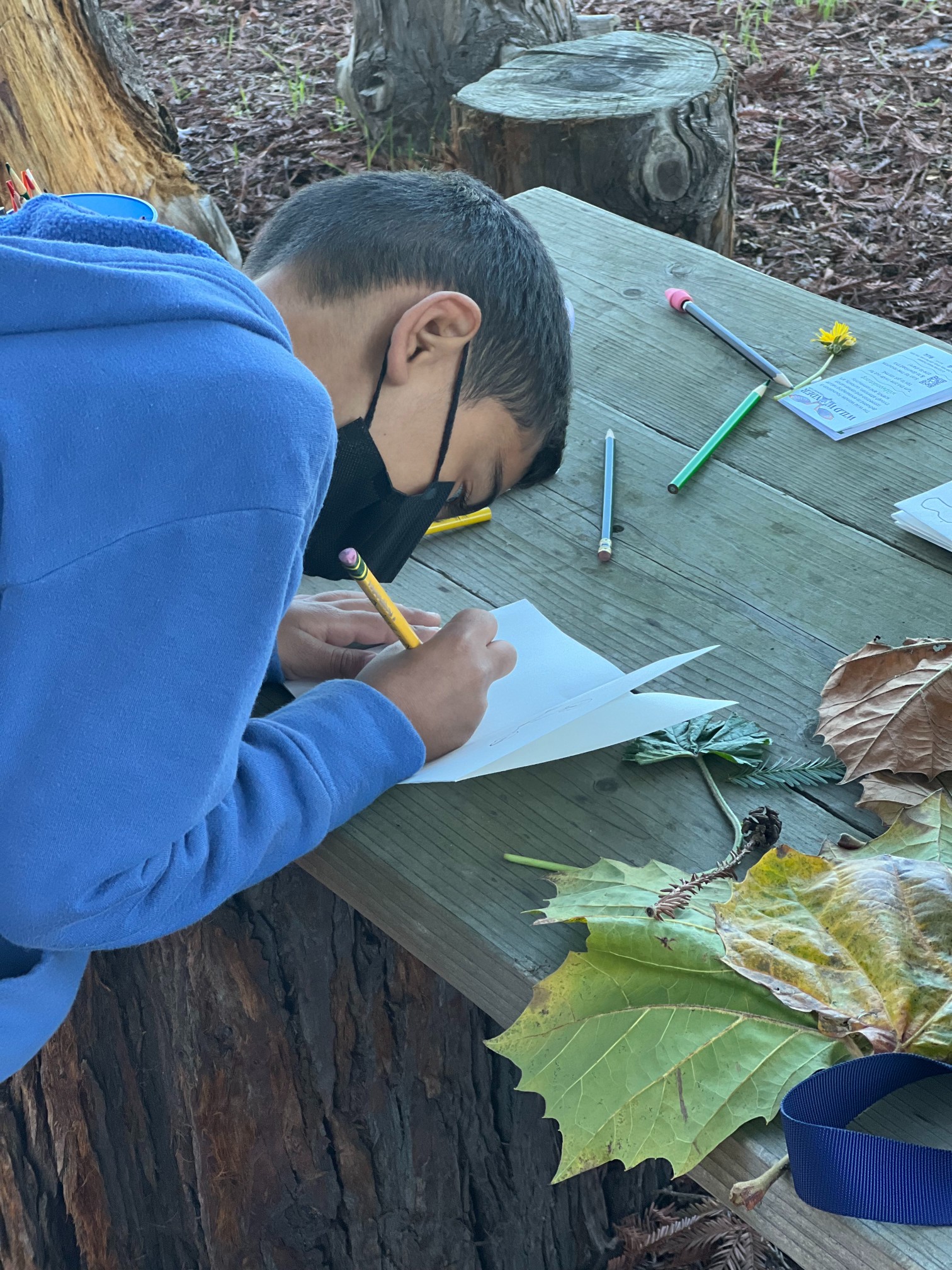
A student from Sonia Phelps Nuss’s class at JX Wilson Elementary School doing nature journaling in an enrichment class that she led. Photo courtesy of Sonia Phelps Nuss.
Sonia brought specific tools she was given during UC CalNat for Teachers into her classroom: “I used the nature journal booklets from Wild Wonder. [A student of mine] loved the class! Additionally, with this group I had a Spanish speaking student and she was thrilled to get the Spanish version,” Sonia says.
One of our attendees from UC CalNat for Teachers, Leah Graniela-Loving, is actively bringing her learnings from this course to support other environmental science educators.
“I provide support for teachers implementing [environmental education], and for the most part, am not out in the field leading groups… I focus on professional development and curriculum development. I’m currently working with two organizations, including one organization that partners with [environmental education organizations] throughout the Bay Area/Sonoma County. I’ve been building spaces for [black, indigenous, and other people of color] educator resiliency in the [environmental education] field and other [diversity, equity and inclusion] supports, as well as formalizing curriculum to share nature therapy with elementary school youth,” Leah shares.
“I learned a lot about how the earth is resilient and that wildfire is part of the natural process. I hope to be able to relate to kid and adult experiences when I think of how to connect the environment, human resilience, and building relationships and love for the earth in youth and their teachers. CalNat was an amazing opportunity to learn and be in the shoes of the [environmental education] educators I serve and support. I’ve been working in STEM and youth development for a long time, but [environmental education] was new to me! I also was introduced to folks from the Nature Wellness Connection during a Forest Bathing workshop on our first CalNat meeting. I have continued to connect with these awesome educators and am currently helping them with curriculum development to formalize and share their teaching with a wider Forest Therapist educator audience, in the hopes that more young people can have solid in-class experiences with forest therapy and access to the tools of self-regulation and resilience that nature can provide,” she continues.
